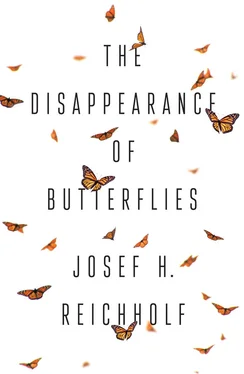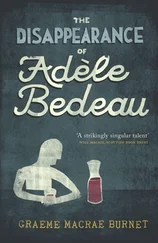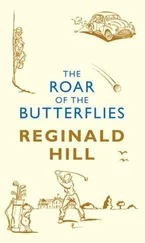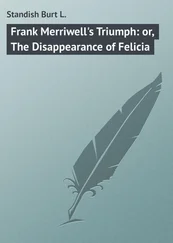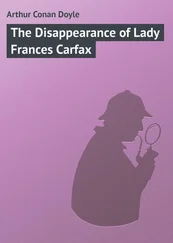However, the pale-yellow design on the back of its thorax that was supposed to remind me of a skull made little impression on me. No matter which way I looked, it did not resemble a skull at all. Perhaps I simply lacked the imagination to conjure one up (see Photo 3). Even now, while I write this, I find it hard to imagine that men in earlier times could have come up with such an odd idea. But those who can see a liver in the leaves of a liverwort, just because it is made up of three ‘lobes’ (not remotely resembling a liver) and can conclude from this that it must be good for liver trouble, will surely manage to make out a mini-skull in the back markings of this hawk-moth.
I am no longer certain what was going through my head at the time, but something happened that awakened the biologist in me once and for all. Our cat, which had been lying on the sofa and pretending to be fast asleep, in the way that cats do, approached and stretched its nose up to the death’s head hawk-moth on the curtains. The moment one of its whiskers touched the moth, the yellow and black-ringed abdomen flicked up between the wings and the moth let out a shrill squeak. The cat recoiled in shock, fell off the edge of the sofa, and took cover underneath it.
The combined effect of the wasp- or hornet-like markings and the squeaking sound, which extends to the ultrasound range, and which may thus be partially inaudible to the human ear, was an object lesson for me: no book, no account of such a procedure, could have explained in a more striking way what ‘aposematic colouring’ means and how it works. I was particularly affected, since I had found it so easy to coax the hawk-moth onto my fingertip and to place it on the curtains. Years later, whenever I stroked a bumblebee, coaxing it to produce a quiet humming, I would think back to this experience. This death’s head hawk-moth, of which there would be dozens more in my life (until the potato harvest was mechanized and no more pupae were to be found or no specimen was able to survive the rough handling of the harvesting machine) – this moth that emerged under my care – touched me (see Photo 4).
1 * In other words, butterflies and moths. ‘Lepidoptera’ is an order of insects that includes both. [Tr.]
The Fascinating Life of Aquatic Moths
Yet at that time I was even more interested in water birds. Shortly after starting my zoology studies, I drew together, and published, the results of my six-year study on their occurrence and frequency on the reservoirs of the lower River Inn. The work was formally accepted by the Zoological Institute as a thesis for the state examination, and I was therefore able to start looking for a topic for my doctoral thesis just two years after commencing my studies. It had to be a piece of field research, preferably an extension of my water-bird studies. However, the assistant professor whom I approached thought that I should save such an extensive research until after my PhD and that I would do better to prepare a topic that included problems of physiology. Of the three suggestions that he gave me, I liked the aquatic moths best. Their strange lives have much to do with physiology, in particular the physiology of breathing under water and the skin structure of the caterpillars, which enables life in water.
As my particular species, I selected the brown china-mark, Nymphula nymphaeata , now Elophila nymphaeata . It is thanks to this small, delicate moth that I gained my PhD (Dr. rer. nat. = Doctorate in Natural Sciences) at the Ludwig-Maximilian University in Munich in 1969. The title of ‘doctor’ is available for the most diverse areas of research, among them abundantly obscure topics whose usefulness is not immediately apparent to everyone. It is possible that my doctoral thesis, ‘Research into the biology of the aquatic moth Nymphula nymphaeata ’, also falls into this category. In 1970 it was published in the International Review of Hydrobiology (volume 55, pp. 687–728). The fact that it dealt with the lifestyle of an aquatic moth with the charming name (when freely translated) ‘little nymph of the water-lilies’ is clear from the title. But understanding what this ‘biology’ actually consists of requires a more detailed description (see Photo 5).
This delicate moth and its close relatives still delight me so much that my heart beats noticeably faster when I see one of them or glean something new about their way of life. This still happens even though so much time has passed since I wrote my dissertation. In moments such as these, I think how lucky I was to choose this topic for my doctoral thesis. The little water-lily nymphs made me into a field biologist who would far rather carry out research outdoors in the natural world than indoors in a laboratory. They fired up my scientific enthusiasm for the beauty and the wonder of the living. I was never able to handle or look on the small moths and butterflies as ‘objects’, as mere research items, however scientifically productive. I was captivated by their vivacity.
How pleased I was when the small moths that I kept at home in an observation tank drank a droplet of lightly sweetened water from my fingertip. Afterwards they would always seem slightly confused and gaze around in bewilderment. The shallow bowl of water filled up with plants from the banks of small ponds – their natural habitat – that I had placed in the tank clearly did not appeal. I was keen to research their behaviour, but being held captive in this manner probably altered it quite significantly. The caterpillars of the aquatic moths could easily be kept in small aquariums. Their lives are focused entirely on the intake of food and on the regular moulting that is necessary for them to grow. During the feeding stage, they do not have any special requirements other than receiving the correct food in the form of leaves from floating-leaf plants. They do not even seem to be very particular about this, contrary to what was described in the specialist literature available at the time. I was therefore able to follow the development of the caterpillars, from the appearance of the eggs through to pupation and the emergence of the moths, directly from my workplace at the Zoological Institute of the University of Munich. But not the lives of the moths themselves.
Yet I was lucky: I came across the secrets of their lives in another, much better manner. Indeed, I first found ‘my’ aquatic moth in the Botanical Gardens in Munich, where the caterpillars devoured the floating leaves of small (and rare) water-lilies. They were rather unpopular with the gardeners for this reason. However, I did not free them of these pests through my research, as they surely hoped I would, since soon afterwards I found the water moths occurring naturally near my home village, in the Lower Bavarian Inn Valley. The brown china-mark moths, to give them their sober technical name, occurred in gravel pits that had been abandoned and even partially misused as rubbish dumps and in the oxbows of the riparian woodlands of the River Inn. I could reach them from home, either on foot or by bicycle. As I began my observations of the brown china-marks during those lovely evenings in early summer, I felt happy. As dusk started to fall, the males commenced their search flights. A first, ivory-coloured moth, easily recognizable in the evening light, danced out of the reeds along the bank and flew, like a wandering shadow, 20–30 centimetres above the water surface. It had barely appeared when dozens of others followed it out of the reeds. In the developing haze that very slowly thickened into mist, they danced their mysterious choreography. Nymphula , little nymph. What a fitting name, I thought, not yet suspecting that much greater treasures awaited me.
Читать дальше
